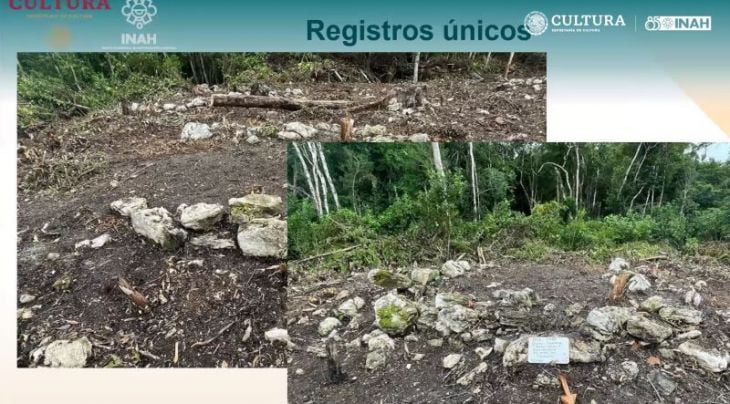The Maya Train project, launched in 2022, has revealed a wealth of hidden artifacts, shedding light on the lives of those who lived on the outskirts of major pre-Hispanic ceremonial centers. Section 7 of the train route, spanning 34.8 of the 256.1 kilometers from Chetumal, Quintana Roo, to Escárcega, Campeche, has proven to be a treasure trove. Archaeologists from the National Institute of Anthropology and History (INAH), a federal agency under the Ministry of Culture, have uncovered 9,699 pre-Cortesian monuments, making it the area with the highest number of discoveries to date, according to archaeologist Luis Alfredo Núñez Soto.
The finds include 4,513 core foundations, 1,103 simple foundations, 709 walls, 657 terraces, 486 pedestals, 392 levels, 339 walkways, 326 composite foundations, 77 alignments, 43 foundations with parapets, 21 chultunes (water storage pits), 17 haltunes or sartenejas (types of water containers), 15 water stagnation depressions, three platforms, and two buk’te’s (reservoirs made in the bottom of the aguadas). These elements offer insights into the function of these monuments within the Maya communities, explained Julieta Ramos Pacheco, coordinator of the project.
For instance, the terrace systems suggest extensive agricultural activity, requiring a group of specialists who altered the landscape to enhance soil quality for farming. This indicates a mastery of specific agricultural techniques, hydrological control, and drainage. The over 600 terraces were likely used for sowing, with surplus crops probably used to supply major urban centers like Calakmul. This area reveals the presence of groups responsible for food cultivation and harvesting, as well as the social stratification that existed in this region.
The collected materials will be available for future research to deepen our understanding of the region's history. The team of specialists, led by Manuel Eduardo Pérez Rivas, the head of archaeological salvage for the Maya Train project, follows a meticulous seven-stage protocol: prospecting, unique registration, excavation, protection measures, recovery, database, and analysis. During the prospecting stage, monuments and material remains are identified and cleaned, explained archaeologist Analí Melchor Tiburcio.
Archaeologist Luis Alan Cabrero Martínez noted that the characteristics of each monument are recorded in detail. During the excavation stage, the form, function, and age of the artifacts are investigated. "The terraces were significant as they yielded fragments of lithic tools, ceramics, obsidian and flint material, anthropomorphic figures, a fragment of human bone, and a bowl, possibly associated with an offering,” added archaeologist Eduardo Cabrera Arenas.
Discover more from Riviera Maya News & Events
Subscribe to get the latest posts sent to your email.
